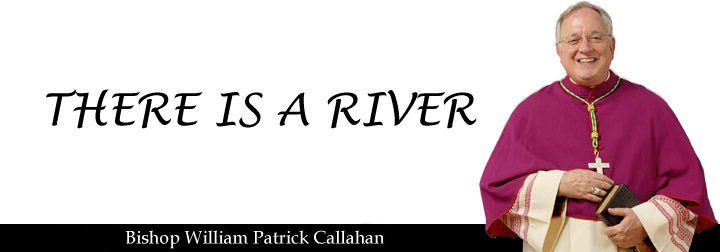My Dear Brothers and Sisters in Christ, as you know, May 1st is the Feast of St. Joseph the Workman. We turn to him for his example and intercession in the context of this great month.
The beautiful month of May honors, in splendid ways, humanity’s goodness and virtue. Significantly, we express our esteem for mothers. First Holy Communion and graduations are also milestones celebrated with sacred pomp and procession in May.
This May, we have the particular grace of welcoming a new bishop to the Diocese of La Crosse. I will celebrate my final Mass as your Bishop on Pentecost. With gratitude and joy, I will remain in service to you and our diocese as Bishop Emeritus. When I reflect on the past 14 years, the memories of our farmers at so many Rural Life Masses, my brother priests teaching, sanctifying and connecting their flock with Jesus, the hundreds of holy Catholic School teachers and their joyous wards, and so many more wash over me. I clearly see such blessings bestowed by the hand of God. We have accomplished much together in the vineyard, and I am so grateful.
At the installation Mass on May 20th, 2024, just days away, we will welcome the 11th Bishop of the Diocese of La Crosse, Bishop Gerard Battersby. He arrives with a wealth of experience as an Auxiliary Bishop in the Archdiocese of Detroit, having been in that role since 2017. We await his arrival with eager anticipation. The day of installation was appropriately and properly selected because it is the feast of Mary, Mother of the Church.
For us, as Catholics, the highest on the list of honorees throughout the month of May is our Blessed Mother, Mary. Our songs to her beauty and grace rise naturally from our hearts. We praise God that she accepted being overshadowed by the Holy Spirit and becoming the Mother of God.
We also know that she could not do the work of raising God’s Son alone. Jesus needed a household, a provider and a fatherly guide. So, the very first day of May is set on our calendar to mark St. Joseph, the man chosen to be the earthly father of God’s Son. Indeed, we look to St. Joseph under a specific title, St. Joseph the Workman, the patron and namesake of our cathedral.
In 1955, Pope Pius XII named May 1st, a day set aside in many nations to honor the laborer, the patronal feast day for St. Joseph the Workman. As a technician and carpenter, Joseph fashioned useful objects from the material of God’s creation. His skills did not make him a wealthy man, but his hard work and courageous obedience provided what the Holy Family needed to accomplish the will of the Eternal Father.
Undoubtedly, Jesus learned from Joseph’s faith, obedience and quiet diligence. People would say of Jesus once he began to teach and perform miracles, “Is He not the carpenter’s son?” (Mt 13:55). Although the question revealed the crowd’s lack of faith, it must have also stirred in Jesus a marvelous sense of the union He cherished with Joseph.
Every time we see the lily and carpenter’s square carved into the stone adorning our cathedral building, we are reminded of that connection. The lily speaks to Joseph’s purity and virtue in safeguarding his beloved wife’s perpetual virginity. The carpenter’s square makes visible his courage and fortitude in protecting and providing for the Son of God.
So, let us seek the power of St. Joseph’s prayers. May he strengthen us to imitate his chastity and encourage us in our labors of charity. May God watch over us and take care of us in the Diocese of La Crosse during all the years to come.
St. Joseph the Workman. Pray for us. Amen.
I remain yours, forever, in the service of Jesus and Mary,
Bishop William Patrick Callahan
